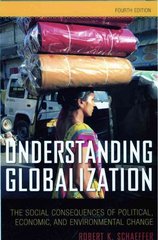Question
Consider a market with an incumbent firm, a potential entrant and a buyer with demand D(p) = 180 p. Suppose the potential entrant is more
Consider a market with an incumbent firm, a potential entrant and a buyer with demand D(p) = 180 p.
Suppose the potential entrant is more efficient than the incumbent. The entrant has a unit production cost of $10 whereas the incumbent has a cost of $20 per unit. However, the entrant has to pay an entry cost of F = 500. Before entry, the incumbent can propose the buyer to sign an exclusive contract in exchange of a payment t to the buyer. An exclusive contract prevents the buyer to purchase from the entrant. The timing is as follows:
1. Incumbent offers buyer exclusive contract with payment t
2. B accepts or rejects
3. E decides to enter or not
4. active firms name price to B
5. B chooses supplier (respecting exclusive contract if in place)
(a) Suppose no exclusive contract has been signed. Derive the equilibrium prices, profits and consumer surplus if (i) the entrant enters and (ii) the entrant does not enter.
(b) Give the minimum amount t the incumbent has to pay to induce the buyer to accept the exclusive contract. Give the maximum amount t the incumbent is willing to pay for an exclusive contract. Compare t and t and explain the overall outcome of the game.
Suppose now there are two identical buyers with the same demand as above. At stage 1, the incumbent offers payments t1 and t2 for buyer 1 and buyer 2, respectively, in exchange for an exclusive contract. At stage 2, the buyers simultaneously decide whether to accept or reject the offer. Then stages 3-5 follow as above. Note that at stage 4, each active firm is able to name a different price for each buyer. Finally, assume that the entry cost of the entrant is F = 2000.
(c) Derive the equilibrium for stages 3-5 as a function of whether (i) both buyers sign exclusive contracts, (ii) exactly one buyer signs and (iii) no buyer signs.
(d )Derive the equilibrium of the buyer acceptance game at stage 2 as a function of the values (t1, t2).
(e) In case there are multiple equilibria in your answer to (d), assume that buyers can coordinate on the Pareto dominant equilibrium. Derive the optimal values for (t1, t2). Do the buyers sign exclusive contracts in equilibrium? Does entry occur or not? Compare your results to (b) and explain briefly.
Step by Step Solution
There are 3 Steps involved in it
Step: 1

Get Instant Access to Expert-Tailored Solutions
See step-by-step solutions with expert insights and AI powered tools for academic success
Step: 2

Step: 3

Ace Your Homework with AI
Get the answers you need in no time with our AI-driven, step-by-step assistance
Get Started


